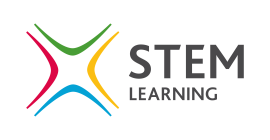- View more resources from this publisher
 National STEM Learning Centre and Network
National STEM Learning Centre and Network - View more resources from this publisherResearch Councils UK - UKRI
Genetic Modification of Plants and Food Security
Produced in 2015, these resources look specifically at how genes can be altered in plants and how bacteria are central to genetic engineering techniques. Genetically modified (GM) crops offer the potential to help improve food security though this still remains controversial in some areas.
These film clips and activities are based on the work being carried out by Dr Ricardo Randall and colleagues at Cardiff University Biosciences department. They experiment with the simple plant Arabidopsis, though most of the work with DNA is carried out in the bacteria Escherichia coli. This research is applicable to many commercial crops. The laboratories are well equipped for manipulating DNA in bacteria, but the facilities also benefit from plant rooms where the genetically modified plants can be grown under artificial light and carefully regulated environmental conditions.
These materials can be used to address a range of topics in post-16 biology. These include:
*Genetic engineering
*Genetically modified crops
*DNA technology in agriculture
*Cloning
*Microbial techniques
These resources were Supported and funded by National STEM Learning Centre and Network and Research Councils UK (RCUK)
Show health and safety information
Please be aware that resources have been published on the website in the form that they were originally supplied. This means that procedures reflect general practice and standards applicable at the time resources were produced and cannot be assumed to be acceptable today. Website users are fully responsible for ensuring that any activity, including practical work, which they carry out is in accordance with current regulations related to health and safety and that an appropriate risk assessment has been carried out.
Downloads
-
Assessment activities 80.29 KB
-
Teacher guidance 293.82 KB
-
Teacher guidance 928.45 KB
-
Assessment activities (PDF) 1.43 MB




